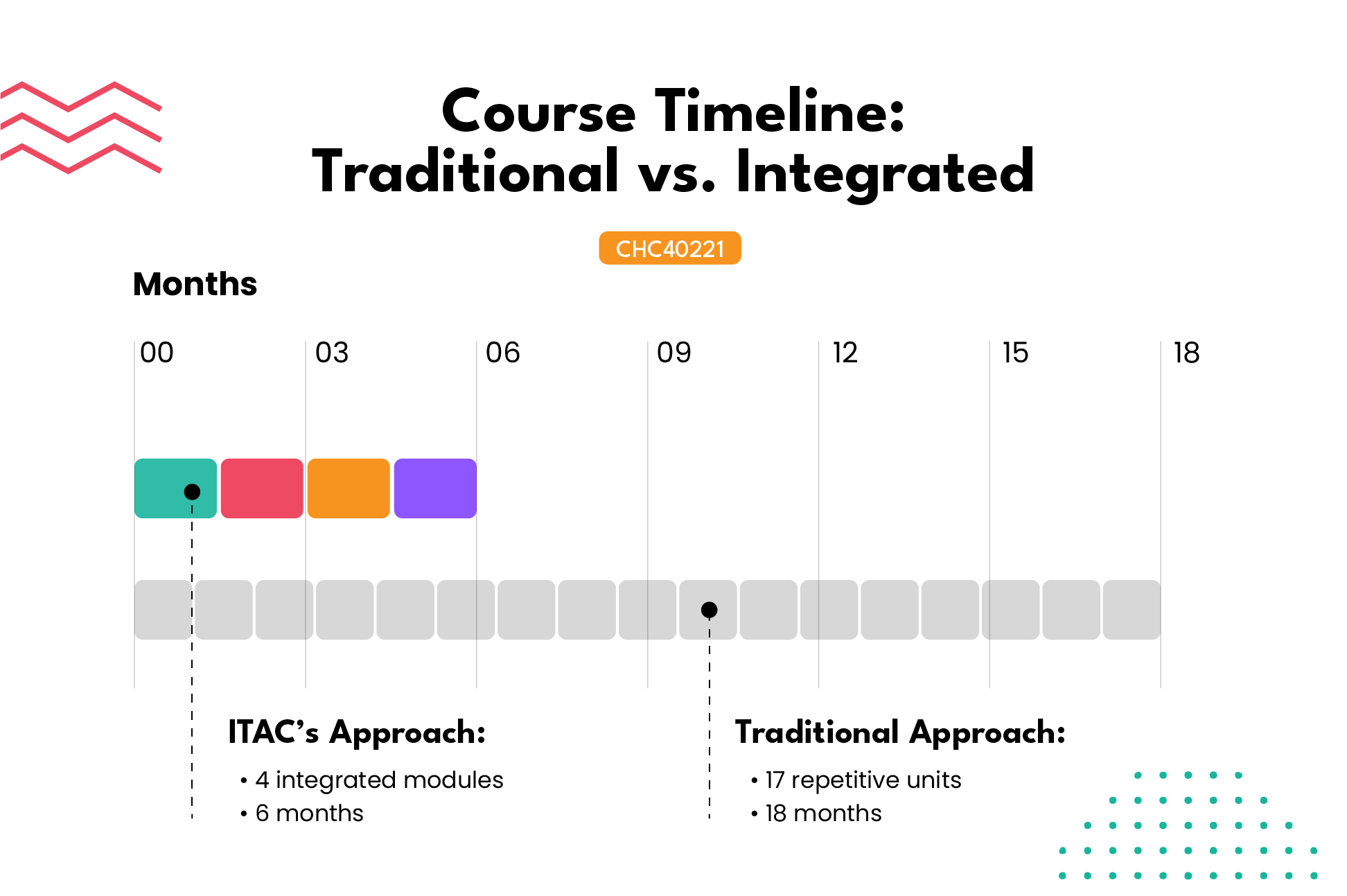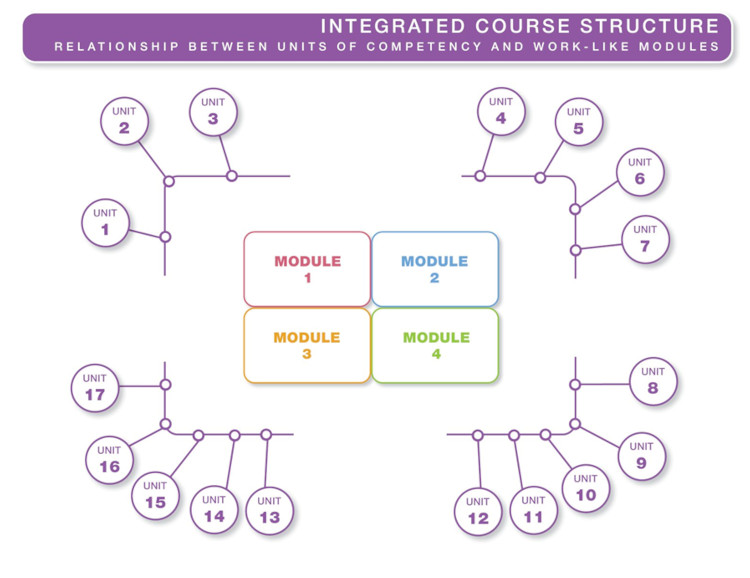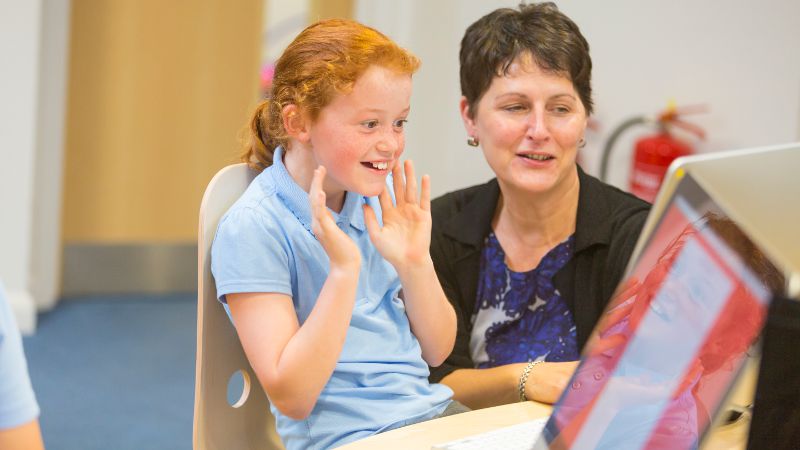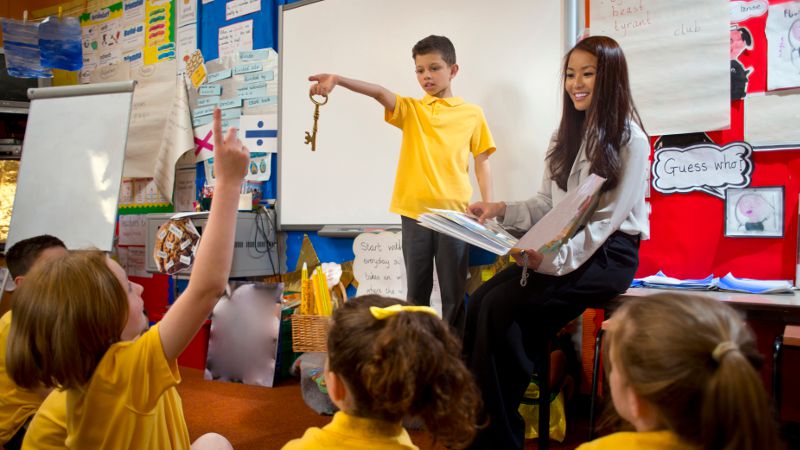
The Ultimate Guide to Integration Aide Courses in Victoria

Are you passionate about supporting students with additional needs in Victorian schools? Do you envision yourself working collaboratively with teachers to create inclusive learning environments where every child can reach their full potential? If so, pursuing a career as an integration aide might be your calling. This comprehensive guide will walk you through everything you need to know about integration aide courses in Victoria, helping you make informed decisions about your professional development journey.
What is an Integration Aide?
Integration aides, also known as education support workers, learning support officers or teacher assistants, play a vital role in Victorian classrooms. They work under the guidance of teachers to provide targeted support for students with disabilities, learning difficulties, behavioural challenges, and other additional needs. Integration aides help these students engage with the curriculum, participate in classroom activities, and develop their social and emotional skills.
Key Responsibilities of Integration Aides:
- Implementing personalised learning plans and support strategies
- Adapting learning materials and activities to suit individual needs
- Providing one-on-one and small-group instructional support
- Assisting with personal care, mobility, and health management tasks
- Facilitating positive behaviour support and social skill development
- Collaborating with teachers, specialists, and families
Qualification Pathways for Integration Aides in Victoria

To work as an integration aide in Victorian schools, you'll need to complete a nationally recognised qualification in education support. The two most common pathways are:
- CHC30221 Certificate III in School Based Education Support
- CHC40221 Certificate IV in School Based Education Support
Both qualifications equip you with the practical skills and knowledge to support diverse learners effectively. However, they differ in their depth and focus:
Certificate III: This entry-level course is perfect if you're new to the field or looking to gain a solid foundation in education support. You'll learn essential strategies for working with students in mainstream classrooms, such as fostering inclusive environments, supporting positive behaviour, and assisting with learning activities.
Certificate IV: Building on the Certificate III, this higher-level qualification dives deeper into supporting students with more complex needs. You'll develop specialised skills in areas like implementing individual learning plans, facilitating assistive technology use, and collaborating with multidisciplinary teams. The Certificate IV is ideal if you want to take on more advanced roles or work in specialist support settings.

Why Choose ITAC for Your Integration Aide Training?
When it comes to integration aide courses in Victoria, not all training providers are created equal. At ITAC, we pride ourselves on delivering industry-leading education support qualifications that set our graduates up for success. Here's why ITAC should be your top choice:
- Flexible online learning made for busy adults
- Experienced local trainers who have worked extensively in schools near you
- Practical, hands-on training aligned with the needs of Victorian schools
- Structured 100-hour work placement to gain real classroom experience
- Integrated course structure – saving you time and money by finishing much sooner
- Australia’s most popular and most recognised training provider for education support

Our innovative approach to integration aide training combines the best of online learning with practical skill development. You'll engage with interactive coursework, participate in live webinars with expert trainers, and have support whenever you need it. Throughout your studies, you'll have access to ITAC's extensive range of resources, ensuring you feel confident and prepared every step of the way.
Real-World Experience Through Work Placement
At ITAC, we believe that hands-on experience is crucial for success as an integration aide. That's why all our courses include a 100-hour practical placement component in a Victorian school setting. During your placement, you'll have the opportunity to:
- Apply your knowledge and skills in an authentic classroom environment
- Work directly with students under the guidance of experienced teachers
- Build your professional network and gain valuable industry contacts
- Receive constructive feedback from your supervisor and ITAC assessor
- Develop your confidence and job-readiness for future roles
Our strong partnerships with schools across Melbourne and regional Victoria mean we can help you organise a placement that aligns with your career goals and location preferences. Many of our students even go on to gain employment at their placement schools!
Your Path to a Rewarding Career as an Integration Aide
Completing an integration aide course with ITAC is your first step towards a fulfilling career supporting diverse learners in Victorian schools. With the skills, knowledge, and hands-on experience you'll gain, you'll be well-prepared to make a positive impact in any educational setting.
- Family friendly hours with no work on weekends, evenings or public holidays
- Competitive salaries with annual increments
- Opportunities for full-time, part-time, and casual work
- Diverse settings, from mainstream classrooms to specialist schools
- Rewarding work that directly contributes to student growth and wellbeing
- Potential for career advancement and further specialisation
By choosing ITAC for your integration aide training, you're investing in your future and the futures of the students you'll support. Our commitment to quality, industry-relevance, and student success sets us apart as Victoria's premier provider of education support courses.
Are you ready to embark on a meaningful career empowering learners of all abilities? Explore our integration aide courses today and take the first step towards turning your passion into a profession. Get in touch with our friendly team to discuss your goals, ask questions, and learn more about how ITAC can help you succeed as an integration aide in Victoria.
Navigating This Article
This detailed guide covers everything about the ITAC’s integration aide courses available in Victoria.
Quick Links - If you don't need the full article:
- CHC30221 Certificate III in School Based Education Support
- CHC40221 Certificate IV in School Based Education Support
- Education Support Combo - Our Most Popular Option
Key Resources:
Contact Us:
- Phone: 1300 858 191
- Email: info@itac.edu.au
- Contact Page
Below you'll find links to an in-depth exploration of each topic - simply select the area you'd like to learn more about:
Table of Contents
- What is an Integration Aide?
- How do I Become an Integration Aide in Victoria?
- Are There Different Types of Integration Aides in Victoria?
- What is the Best Integration Aide Course for Me?
- Are Integration Aide Jobs Hard to Find?
- A Career That Fits Your Family Life
- Study Mode Options for Integration Aide Courses in Victoria
- Unmatched Support for Your Integration Aide Course
- Placement for Your Integration Aide Course in Victoria
- Integrated Learning for Smarter, Faster Results
- Summary: ITAC's Integration Aide Courses in Victoria
What is an Integration Aide?

An integration aide is a key member of the school support staff who works closely with teachers to create an inclusive learning environment for all students, with a particular focus on those with disabilities, disorders, or additional needs. The role of an integration aide is multifaceted and adaptable, as they tailor their approach to meet the unique requirements of each student they support.
To become an integration aide in Victoria, it is crucial to complete a nationally recognised integration aide course, such as the CHC40221 Certificate IV in School Based Education Support. This course equips aspiring integration aides with the knowledge, skills, and strategies needed to effectively support students with a wide range of conditions, including:
- Neurological and processing disorders
- Physical disabilities
- Behavioural challenges, such as oppositional defiant disorder
- Autism spectrum disorder (ASD)
- Foetal alcohol spectrum disorder (FASD)
- Down syndrome
- Attention deficit hyperactivity disorder (ADHD)
- Developmental delays
In addition to working with students who have formal diagnoses, integration aides also support those who may be struggling with literacy, numeracy, behaviour, or neurological issues without an official diagnosis. This highlights the importance of adaptability and the ability to "wear many hats" as an integration aide. A quality integration aide course in Victoria prepares individuals to handle these diverse responsibilities with confidence and skill.
The day-to-day tasks of an integration aide can vary significantly depending on the school setting and the specific needs of the students under their care. However, there are four key areas where integration aides make a significant impact:
- Promoting inclusion: Integration aides work to ensure that all students feel valued, respected, and included within the school community, regardless of their abilities or challenges.
- Supporting curriculum access: By working closely with teachers, integration aides help modify and adapt learning materials and activities to make them accessible to students with additional needs.
- Assisting with classroom management: Integration aides play a vital role in maintaining a positive and productive learning environment by supporting teachers in managing student behaviour and implementing classroom routines.
- Providing individualised support: Integration aides work one-on-one or in small groups with students who require additional assistance, offering targeted interventions and support strategies tailored to each student's unique needs.
The importance of collaboration between integration aides and classroom teachers cannot be overstated. When integration aides and teachers work together effectively, students with additional needs are more likely to thrive academically, socially, and emotionally. This is why a high-quality integration aide course in Victoria places a strong emphasis on developing teamwork, communication, and problem-solving skills.
Ultimately, integration aides play a vital role in creating a more equitable and inclusive education system, where all students have the opportunity to reach their full potential. By completing a comprehensive integration aide course in Victoria, aspiring education support workers gain the tools and expertise needed to make a genuine difference in the lives of the students they support.
Embarking on a career as an integration aide is a rewarding choice for those who are passionate about education, diversity, and empowering others. With the right training and dedication, integration aides can help build a brighter future for students with additional needs, one classroom at a time.
How do I Become an Integration Aide in Victoria?

We have written a detailed article on how to become a teacher aide which we highly recommend.
Becoming an integration aide in Victoria is a rewarding career path that allows you to make a real difference in the lives of students with additional needs. If you're passionate about inclusive education and supporting diverse learners, this role might be your calling.
The most common pathway to becoming an integration aide in Victoria is by completing an accredited integration aide course. There are three main options:
- CHC30221 Certificate III in School Based Education Support
- CHC40221 Certificate IV in School Based Education Support
- ITAC’s popular Education Support Combo
Completing one of these programs is essential if you are planning to work in a Victorian school as an integration aide. In fact, Victorian schools generally require their support staff to have completed an integration aide course before being employed. Usually this means the CHC40221 Certificate IV in School Based Education Support, as it aligns with the nature and complexity of the role and is specifically designed for supporting students with additional needs.
So, what will you learn in an integration aide course? The curriculum covers a wide range of essential skills and knowledge areas, including:
- Working safely and effectively in an education support role
- Supporting students with disabilities, disorders, and learning difficulties
- Implementing inclusive education practices and adjustments
- Managing challenging student behaviour and promoting positive behaviour support
- Supporting literacy and numeracy development
- Collaborating with teachers, families, and other support professionals
In essence, an integration aide course will give you the tools to be the best possible support for students with additional needs. You'll learn about common disabilities and disorders, evidence-based support strategies, and how to create an inclusive learning environment where every student can thrive.
While the Certificate III provides a good starting point, especially if you're new to the field, the CHC40221 Certificate IV in School Based Education Support is the best choice if you're serious about working as an integration aide in Victoria. It's a more comprehensive qualification that will give you a competitive edge in the job market and prepare you for the full range of challenges and responsibilities you'll face in the role.
If you're really looking to boost your resume and career prospects, you might also consider a dual qualification like ITAC's Education Support Combo. This option allows you to complete both the Certificate III and Certificate IV in roughly the same time as it would take to complete one course alone. It's a popular choice for students who want to gain a broad skill set and maximise their job opportunities.
It's worth noting that with some training providers, like ITAC, you can enrol directly into the CHC40221 Certificate IV in School Based Education Support even if you haven't completed the Certificate III. This means you can streamline your learning journey and get qualified for integration aide roles sooner.
Becoming an integration aide is a journey of gaining knowledge, building practical skills, and developing the right mindset to support students with additional needs. By completing a quality integration aide course, you'll be well on your way to a fulfilling career in inclusive education. Your work will have a profound impact on the lives of the students you support, helping them to thrive academically, socially, and emotionally.
If you're ready to take the first step towards becoming an integration aide in Victoria, exploring your training options is the place to start. Look for a reputable provider, like ITAC, that offers the CHC40221 Certificate IV in School Based Education Support and provides plenty of support along the way. With dedication and the right qualification under your belt, you'll soon be making a real difference in Victorian classrooms.
Are There Different Types of Integration Aides in Victoria?

There are various types of integration aides in Victoria. The most common type is a special need's integration aide. These positions require the completion of a special needs integration aide course such as the CHC40221 Certificate IV in School Based Education Support. These support workers are employed in specialist schools and other programs and departments.
In this role, their primary focus is supporting students who have one or more disabilities or disorders, and who require regular support (one-on-one). Many integration aides work in specialist schools, while others are employed in inclusive mainstream classrooms.
To learn more about what teacher aides or integration aides do, please read our detailed article on the topic: what do teacher aides do?
A specialist school caters specifically and exclusively for students who have a disability or disorder and who require specialist care, programs and support staff. The cohort for this type of school comprises students with high needs who require near-constant one-on-one support from an adult.
Once you have completed your integration aide course and are armed with the necessary skills to effectively support students and teachers, you could find yourself working in any number of schools in Victoria, including primary schools, high schools, K-12 schools, government and non-government schools, alternative and faith-based schools, or specialist schools. You might find yourself in a:
- primary school such as Abbotsford Primary School or Yea Primary School
- high school such as Balwyn High School or Box Hill High School
- specialist school such as Croxton Special School or Echuca Specialist School.
What is the Best Integration Aide Course for Me?
As outlined earlier, if you're looking to work as an integration aide, we highly recommend considering the CHC40221 Certificate IV in School Based Education Support or the Education Support Combo.
The Certificate IV is the integration aide course known by industry as being the best qualification to hold for those who work with students with additional needs. It includes specific topics and subjects related to disabilities and disorders, and focuses on implementing strategies relevant to their needs.
The CHC30221 Certificate III in School Based Education Support really only touches on the basics of working with students with additional needs. This may be a better choice for those who are fresh from graduating high school, still in high school, or who are experiencing some other learning barrier, such as English language skills or a learning disorder. Otherwise, we recommend adult learners go straight into Certificate IV, so they are qualified for all integration aide roles.
Are Integration Aide Jobs Hard to Find?
There are thousands of schools in almost every state of Australia, and Victoria is no exception. There are also tens of thousands of integration aides. In fact, many schools have more integration aides than teachers.
This is because integration aides support students one-on-one and there are often multiple integration aides working under a single coordinating teacher. Take your average specialist school for example, it may have 10, 20, 30 or even more integration aides and only 10-15 teachers.
Provided you have the right demeanour, dress professionally, hold the required clearances, and have completed a nationally recognised integration aide qualification with a reputable provider, you have a good chance of finding work in a local school given the sheer volume of schools and positions.
The easiest way to find work in this industry (at least initially) is to first complete a nationally recognised integration aide qualification, obtain your necessary clearances to work with children, put your resume together and finally ask all schools in your area to place you on their relief list.
A Career That Fits Your Family Life
Completing an integration aide course in Victoria, like the CHC40221 Certificate IV in School Based Education Support, opens up a truly family-friendly career path. As an integration aide supporting students with additional needs, you'll enjoy:
- School-Aligned Schedules: Your workday will match your children's school hours, typically 9 am to 3 pm during school terms. This means you can drop them off in the morning and be there to pick them up in the afternoon.
- Ample Holidays: Integration aides get around 12 weeks of paid school holidays per year, giving you valuable time to spend with your family without juggling annual leave.
- Predictable Routines: Forget about weekend shifts or late nights. Integration aide roles offer consistent Monday to Friday hours, allowing you to plan family time with ease.
Meaningful Work, Balanced Life

Integration aides make a real difference in the lives of students with disabilities, disorders, and additional needs. With a CHC40221 Certificate IV, you'll have the specialised skills to support these students in both mainstream classrooms and specialist settings across Victoria.
Kylie's Story: Kylie works as an integration aide at a primary school in Melbourne's eastern suburbs. She supports a Year 2 student with autism, helping him engage with classroom activities and develop social skills. The role's regular hours allow Kylie to be there for her own children's milestones and school events. "I feel like I have the best of both worlds," she says. "I get to do meaningful and decent paid work while still being a present and involved parent."
Opportunities Galore
Integration aide courses prepare you for a range of roles supporting students with additional needs, such as:
- Working one-on-one with a student who has a disability or disorder
- Running small group interventions for literacy and numeracy
- Supporting positive behaviour and social skill development
- Assisting with personal care and mobility needs
- Collaborating with teachers to create inclusive learning environments
With over 2,200 schools across Victoria, there are integration aide opportunities in just about every community, from inner-city Melbourne to regional centres like Geelong, Ballarat, and Shepparton.
A Smart Investment
Completing an integration aide course is a savvy move for Victorian parents looking to re-enter the workforce or change careers. This nationally recognised qualification:
- Gives you the specialised skills to support students with additional needs
- Allows you to work in both mainstream schools and specialist settings
- Opens doors to job opportunities in government, independent, and Catholic schools
- Offers a starting salary far higher than comparable industries like childcare and aged care, with guaranteed annual increments
Best of all, with ITAC's flexible online learning and practical placement support, you can gain your integration aide qualification in as little as 6 months.
Your Path to a Rewarding, Family-Friendly Career
If you're ready to make a difference in the lives of students with additional needs while enjoying a truly family-friendly career, an integration aide course is your next step. With one of ITAC’s popular School Based Education Support qualifications, you'll gain the skills, knowledge, and practical experience to thrive in this high-demand field. You’ll never be out of work!
Don't wait to start building a career that fits your family life. Explore integration aide courses with the premier provider in Victoria, and take the first step towards a fulfilling future supporting Victoria's diverse learners.
Study Mode Options for Integration Aide Courses in Victoria
At ITAC, we understand that every learner is unique, with their own goals, commitments, and learning styles. That's why we offer a range of flexible study modes for our integration aide courses in Victoria, ensuring that you can gain the skills and knowledge you need to succeed in this rewarding field, no matter your circumstances.
Online Learning: Flexibility Meets Structure
Our online integration aide courses are designed to provide the perfect balance of flexibility and structure for busy adult learners. When you choose to study the CHC30221 Certificate III in School Based Education Support or the CHC40221 Certificate IV in School Based Education Support online, you'll benefit from:
- Engaging, multimedia-rich learning materials that you can access anytime, anywhere
- Clearly defined learning pathways that keep you on track and motivated
- Regular live webinars and Q&A sessions with experienced Victorian trainers
- One-on-one support from dedicated student success coaches
- The ability to study at your own pace, fitting your learning around work, family, and other commitments

ITAC's online learning platform is intuitive and user-friendly, making it easy to navigate your course content, submit assessments, and interact with your trainers and fellow students. With a generous 18-month enrolment period, you'll have plenty of time to complete your integration aide course, even if life throws you a curveball.
Accelerated Learning for Learners with Work and Life Experience
If you have experience in the workforce and are looking to transition into a career as an integration aide, ITAC's Experienced Learner Program could be the perfect fit. This specialised study mode recognises your prior learning and experience, allowing you to fast-track your integration aide course without compromising on quality.
In this accelerated integration aide course, you'll:
- Complete your integration aide course in as little as 16 weeks
- Receive a personalised learning plan tailored to your existing skills and knowledge
- Benefit from one-on-one coaching and support from experienced trainers
- Gain practical experience through a structured placement in a Victorian school
This intensive study mode is ideal for learners who have significant experience working with children, such as former teachers, childcare workers, or volunteers in education settings. By building on your existing expertise, ITAC's Accelerated Learning Program helps you transition into your new career as an integration aide sooner.
Real-World Experience Through Practical Placement

Regardless of your chosen study mode, all of ITAC's integration aide courses in Victoria include a crucial practical component: a structured work placement in a local school. This real-world experience is essential for developing the hands-on skills and confidence you'll need to support students with additional needs effectively.
During your placement, you'll have the opportunity to:
- Apply your theoretical knowledge in an authentic classroom setting
- Work alongside experienced teachers and integration aides, learning from their expertise
- Develop practical strategies for supporting students with a range of disabilities and learning needs
- Build professional relationships and networks within the Victorian education community
ITAC has strong partnerships with schools across Victoria, from metropolitan Melbourne to regional centres like Geelong, Ballarat, and Bendigo.
Support at Every Stage
No matter which study mode you choose for your integration aide course, ITAC's dedicated support team will be with you every step of the way. From your initial course enquiry to your graduation and beyond, our friendly and knowledgeable trainers, student success coaches, and placement coordinators are committed to helping you achieve your goals.
As Victoria's leading provider of integration aide courses, ITAC has a proven track record of producing job-ready graduates who go on to make a real difference in the lives of students with additional needs. Our industry connections, engaging course content, and focus on practical skill development ensure that you'll graduate with the confidence and capabilities to succeed in this rewarding field.
Take the First Step Towards a Meaningful Career
If you're ready to embark on a career that combines your passion for education with the opportunity to support some of Victoria's most vulnerable students, an integration aide course with ITAC is your first step.
With our flexible online, in-person, and accelerated study modes, you can gain the nationally recognised qualification you need to work as an integration aide in Victoria's diverse education sector. Whether you're based in inner-city Melbourne, the suburbs, or a regional centre, ITAC has a study option to suit your needs and circumstances.
Don't wait to start making a difference. Explore ITAC's integration aide courses today and take the first step towards a fulfilling career supporting students with additional needs to reach their full potential. Contact our friendly Victorian team to learn more about our study modes and find the perfect fit for your learning style and lifestyle.
Unmatched Support for Your Integration Aide Course
Choosing to study an integration aide course is a significant step towards a rewarding career supporting young learners in Victorian schools. At ITAC, we understand that the quality of support you receive throughout your learning experience can make all the difference in your success. That's why we've developed a wide range of support services designed specifically for aspiring integration aides in Victoria.
Our Melbourne-based team of expert trainers and support staff are intimately familiar with the Victorian education system and the unique challenges and opportunities it presents. We've channelled this knowledge into crafting support services that will equip you with the skills, confidence, and connections you need to thrive in any Victorian school setting.
Personalised Guidance Every Step of the Way
When you enrol in an integration aide course with ITAC, you gain a dedicated support network committed to your success. Our experienced Victorian trainers, who have spent years working in many different school settings across the state, provide:
- Individualised mentoring to help you master critical skills and strategies for supporting students with a range of needs
- Detailed, constructive feedback on assessments, ensuring you can apply your learning effectively in real-world classroom situations
- Regular progress check-ins to keep you on track, motivated, and informed about your growth and development
- Industry insights and career advice to help you navigate the Victorian education landscape and secure your dream role
You'll have direct access to your trainers and support staff via phone and email, ensuring you always have a friendly expert on hand to address your questions and concerns.
Specialist Support Programs
At ITAC, we're committed to providing an inclusive and accessible learning environment that caters to the diverse needs of our students. To support this, we offer the following specialist support programs alongside our integration aide courses:
- EnablePath: This program provides additional support for learners who may require accommodations to complete their course successfully. EnablePath offers modified learning resources, technology assistance, and collaborative support planning to ensure every student can access and engage with course materials effectively.
- Dandjoo Support: We recognise the unique needs of our Aboriginal and Torres Strait Islander students and are committed to providing culturally appropriate support. Our Dandjoo program offers tailored study assistance, culturally sensitive assessment arrangements, and guidance from experienced Aboriginal education professionals.
- JobAssist: JobAssist is designed to connect graduates with Victorian schools seeking qualified integration aides, and provide ongoing career support.
These programs are a testament to our dedication to supporting every learner, regardless of their background or individual needs, to excel in their integration aide course and launch a successful career in the Victorian education system.
Take the First Step
Take the first step towards a brighter future for yourself and the students you'll support. Get in touch with our friendly Melbourne team today to learn more about our integration aide courses and the unparalleled support we provide. Together, we can make a real difference in the lives of Victoria's diverse learners.
Placement for Your Integration Aide Course in Victoria
A cornerstone of ITAC's integration aide courses, including the CHC30221 Certificate III in School Based Education Support, CHC40221 Certificate IV in School Based Education Support, and the comprehensive Education Support Combo, is the 100-hour practical placement. This real-world experience, completed in a Victorian school setting, allows you to apply the knowledge and techniques gained throughout your integration aide course.
During your placement, you'll work closely with experienced Victorian teachers and integration aides who will mentor and support you as you contribute to students' learning and growth. This hands-on experience, whether in Melbourne, Geelong, Ballarat, or another Victorian location, offers valuable opportunities to:
- Assist in developing and delivering engaging activities and lessons across the Victorian curriculum, including English, mathematics, science, and the arts
- Provide personalised support to individual students and small groups with diverse learning needs, guided by your integration aide course training
- Implement strategies learned in your integration aide course to create an inclusive classroom environment that promotes student well-being and success
- Collaborate with Victorian teachers and school staff to develop and execute individualised learning plans and behaviour support strategies
- Contribute to the day-to-day running of a Victorian classroom by assisting with administrative tasks and classroom organisation
Your Victorian placement school will provide a supportive setting where you can refine the skills developed in your integration aide course. You'll be paired with a dedicated mentor who will offer guidance and feedback throughout your placement journey.

To maximise the benefits of your integration aide course placement, it's essential to:
- Communicate professionally with your mentor, other Victorian school staff, students, and families where permitted to do so
- Actively seek opportunities to apply the knowledge from your integration aide course in the classroom
- Demonstrate the flexibility and adaptability emphasised in your integration aide course, as each day in a Victorian school brings new challenges and opportunities
- Engage in self-reflection and seek feedback to identify areas for growth, further enhancing the skills gained in your integration aide course
- Document your placement hours and experiences to showcase your professional development and the practical application of your integration aide course learning
Many ITAC graduates find that their Victorian placement school becomes their first employer upon completing their integration aide course. Your placement allows you to showcase the dedication, skills, and passion for supporting Victorian students that you've developed throughout your integration aide course.
Linda's Story
Linda, a mother of two, had been actively involved in her children's primary school in Shepparton, Victoria, for several years. Inspired by her experiences supporting students with diverse needs, she decided to enrol in ITAC's CHC40221 Certificate IV in School Based Education Support to formally develop her skills and pursue a career as an integration aide.
Throughout her integration aide course, Linda gained a deep understanding of how to support Victorian students with disabilities, learning difficulties, and behavioural challenges. The practical strategies and theoretical knowledge she acquired during her integration aide course gave her the confidence to make a real difference in students' lives.
As part of her integration aide course, Linda completed her placement at a local school in Shepparton. She worked closely with experienced integration aides and teachers, applying the techniques learned in her integration aide course to support students across various year levels and subject areas.
Linda's dedication, combined with the skills developed during her integration aide course, impressed the school leadership. When a part-time integration aide position became available, they encouraged her to apply. With the knowledge and experience gained through her integration aide course and the strong relationships formed during her placement, Linda secured the role and embarked on a rewarding career supporting Victorian students.
Your placement is a vital component of your integration aide course, offering invaluable real-world experience, the opportunity to expand your professional network, and a stepping stone towards a rewarding career supporting students in Victorian schools. Embrace the challenges and opportunities that your integration aide course placement presents, remain open to learning and growth, and witness the incredible impact you can make as an integration aide in Victoria.
Integrated Learning for Smarter, Faster Results
Are you eager to start making a difference as an integration aide in Victorian schools? When you're investing in your education support career, you want a training provider that respects your time, goals, and unique learning needs. That's where ITAC's revolutionary integrated learning approach comes into play.
Our CHC30221, CHC40221 and popular Education Support Combo are designed with one goal in mind: to help you gain the advanced skills and knowledge you need to excel as an integration aide, faster and more efficiently than traditional programs.
How Does Integrated Learning Work?
- In conventional integration aide courses, each unit of competency is usually taught and assessed separately. While this meets compliance requirements, it can feel disjointed and repetitive.
- ITAC's integrated approach is different. Our expert educators have carefully analysed the units within the CHC40221 qualification to identify common themes and areas of overlap.
- They've then strategically woven this content into cohesive modules that reflect the real-world tasks and scenarios you'll encounter supporting students with additional needs in Victorian schools.
- This means you'll be learning and demonstrating your skills in authentic, contextualised ways that mirror the multifaceted nature of integration aide work.
The Advantages of an Integrated Learning Approach
ITAC's thoughtfully designed integrated learning approach offers a range of compelling benefits for Victorian students pursuing integration aide qualifications. By combining related units and reducing duplication, our expert educators have crafted a learning experience that delivers:
- Significant time savings: Our integrated approach condenses your learning journey by eliminating redundant assessment requirements across units. By focusing on holistic skill development, we enable you to master key concepts and competencies more efficiently. Many of our Victorian students complete their integration aide course job-ready in as little as 6 months, compared to the 12-24 months often required by traditional programs.
- Potential cost savings: Completing your integration aide qualification sooner can translate into significant financial benefits. Every month you save on study is a month you could be earning income supporting students with additional needs. If you're a parent or caregiver, reducing your study duration can also mean spending less on childcare arrangements. Over the course of your integration aide course, these savings can really add up.
- Authentic skill development: Our integrated assessments are designed to closely mirror the multifaceted realities of working as an integration aide in Victorian schools. You'll practise applying a range of skills and knowledge simultaneously, just as you would when supporting real students in diverse classroom settings. This authentic learning experience ensures you graduate from your integration aide course with the practical capabilities and professional confidence to excel from day one.
- Comprehensive understanding: By exploring key topics from multiple angles and in varied scenarios throughout your integration aide course, our integrated approach helps you develop a rich, well-rounded understanding of inclusive education. You'll graduate with a deep appreciation of how different aspects of the integration aide role interconnect in the dynamic context of a Victorian classroom.
In essence, ITAC's integrated learning model is crafted to empower Victorian students with the advanced skills, in-depth knowledge, professional confidence, and efficiency to thrive as integration aides. By providing a more streamlined, authentic and logical learning journey, we prepare you for a smooth and successful transition into this rewarding career through our leading integration aide courses.
Integrated Learning in Action

Let's consider how ITAC's integrated approach works in practice with an example from an integration aide course. Supporting positive learning environments is a crucial skill threaded through multiple CHC40221 units, such as:
- CHCEDS045 Support student mathematics learning
- CHCEDS046 Support student literacy learning
- CHCEDS058 Support the implementation of behaviour support plans
In a traditional unit-by-unit integration aide program, you might find yourself repeatedly explaining identical support strategies across various tasks. It can feel like you're learning about the same skill over and over – and that’s because you are, in fact, learning and being assessed on the same concepts multiple times.
ITAC's integrated approach streamlines this process brilliantly:
- Our expert educators identify the common concepts pertaining to instructional support across core CHC40221 units.
- They create projects and other activities that allow you to explore your support role in-depth, contextualised to realistic scenarios you'll face as an integration aide.
- Throughout your integration aide course, you'll learn to select and apply evidence-based strategies to address support scenarios in a range of learning areas - from assisting a student to stay on task during a literacy intervention to managing classroom transitions effectively.
- By demonstrating your capabilities in these authentic ways, you'll meet the requirements of several units simultaneously – an approach only possible in a leading integration aide course – only provided by ITAC.
This integrated method extends seamlessly into your work placement, a key component of ITAC's integration aide courses. During your hands-on experience in a Victorian school, you'll have countless opportunities to implement well-rounded behaviour support strategies while facilitating learning across the curriculum.
For example, you might be conducting a literacy intervention with a student who has ADHD. In this real-world scenario, you'll need to draw upon a range of skills covered in your integration aide course:
- Using your knowledge of ADHD to proactively modify the environment and learning materials
- Employing positive behaviour support techniques to maintain engagement
- Implementing inclusive instructional strategies matched to the student's needs
- Monitoring progress and collecting data to inform future supports
By practising this authentic integration of your learning, you'll develop genuine confidence in your ability to enable positive outcomes for students with additional needs - the true purpose of any quality integration aide course.
Your Path to Becoming an Integration Aide
ITAC's integrated learning approach exemplifies our dedication to helping you achieve your goal of becoming a skilled integration aide efficiently and effectively. By designing our integration aide courses around this innovative model, we ensure you graduate with the well-rounded capabilities, depth of knowledge, and professional readiness to make a real impact for Victorian students.
With our expert trainers, extensive school partnerships, and nationally recognised qualifications, we offer an unparalleled learning experience that sets you up for success in any Australian educational setting. You'll benefit from:
- Flexible study options designed to fit your unique lifestyle and commitments.
- Personalised support from experienced trainers who have worked extensively in education support roles.
- Invaluable practical experience through a structured work placement in real school settings.
- A nationally recognised qualification that opens doors to diverse job opportunities across the country.
If you're ready to take the first step towards a fulfilling career supporting diverse learners, there's no better choice than an integration aide course with ITAC – Victoria's leading provider of accelerated, job-focused education support training.
Summary: ITAC's Integration Aide Courses in Victoria

If you're passionate about supporting students and making a real difference in schools, becoming an integration aide could be your calling. Integration aide is another term for education support worker, learning/education support officer, or teacher aide. In this role, you'll work closely with teachers to support students with diverse learning needs, helping create inclusive classroom environments where every learner can thrive.
While some integration aides work with students with disabilities or additional needs, others provide general support to larger groups of students in mainstream classrooms. Key duties often include:
- Assisting teachers in delivering lessons and learning activities
- Working with small groups or individual students to provide extra support
- Contributing to positive classroom management and engaging learning environments
- Supporting students in building independent learning skills
To start your journey as an integration aide in Victoria, you'll need to complete a nationally recognised qualification. ITAC, the largest and most trusted provider of education support courses in Australia, offers three key pathways:
- CHC30221 Certificate III in School Based Education Support
- The popular Education Support Combo, which combines both qualifications for maximum job opportunities
What sets ITAC apart is its emphasis on practical, job-focused training. You'll learn through a blend of interactive online content, expert support from trainers with real classroom experience, and a structured 100-hour placement in a Victorian school. This hands-on approach ensures you graduate with the skills and confidence to succeed in any school setting.
Integration aide roles offer family-friendly hours, competitive pay, and the chance to build a truly meaningful career. With over 2,200 schools in Victoria, the demand for qualified education support staff is strong and continually growing.
If you're ready to make a difference in Victorian classrooms, explore ITAC's integration aide courses today. With their flexible online delivery, accelerated completion options, and unrivalled industry relationships, ITAC can help you unlock your potential and start changing lives sooner.
Don't wait to start making an impact - explore ITAC's courses today.























